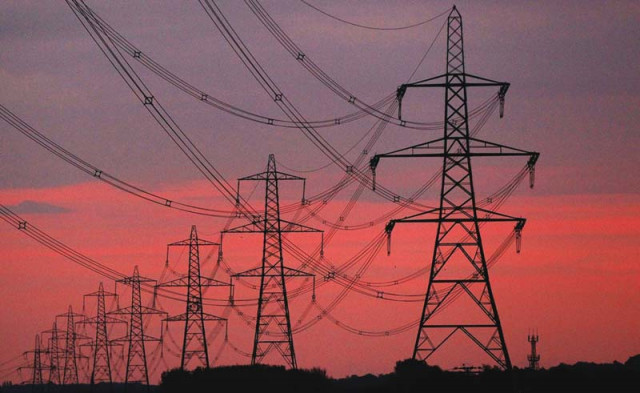For 7 years, K-Electric’s tariff cut by Rs3.50/unit
NEPRA sets it at Rs12.07, requires company to invest Rs238b; power utility’s previous rate was Rs15.57

NEPRA sets it at Rs12.07, requires company to invest Rs238b; power utility’s previous rate was Rs15.57. PHOTO: REUTERS
“The determined tariff is structured to be balanced, transparent and in the interest of consumers as well as K-Electric,” Nepra said while announcing the tariff on its website on Monday.
K-P govt for inclusion of 9 projects in CPEC
The multi-year tariff has been set at Rs12.07 per kilowatt-hour (kWh), lower by Rs3.50 compared to the previous Rs15.57 per unit. The company had sought a tariff of Rs16.23 per kWh.
The regulator has segmented the tariff and cost into three components including generation, distribution and transmission.
In this regard, K-Electric will be required to make an overall investment of Rs237.6 billion over the seven-year period.
Of this, Rs48.1 billion will go to power generation facilities, Rs69.4 billion will be poured into the distribution system, Rs115.7 billion will be injected into the transmission network and Rs4.2 billion will go to other areas.
The regulator will conduct a mid-term review to ensure that the proposed investments are carried out.
It has reduced the transmission and distribution (T&D) loss target, which has been fixed at 20.40% for financial year 2016-17. With this, consumers have got an immediate benefit of 9.6% reduction in T&D losses compared to the 30% loss already built into the existing tariff.
Furthermore, Nepra said, end-consumer tariff will be adjusted with the yearly T&D loss target in accordance with the provisions and adjustment mechanism provided in the determination.
“Being mindful of the interest of K-Electric, (the regulator) has ensured a reasonable return to KE on its existing asset base as well as adequate cash flow to carry out proposed investments,” Nepra said. Keeping in mind the interest of consumers, Nepra has stopped K-Electric from collecting bank charges through monthly billing and has directed the company to pay interest on security deposits to the consumers through their bills.
Moreover, K-Electric has been restrained from charging meter rent from all consumers, whether existing or new.
129 feeders exempted from load-shedding
The regulator has also directed K-Electric to start billing immediately based on tariffs for Time of Use (TOU) meters where consumers have installed such meters.
It has called for providing TOU meters to all the existing consumers that have sanctioned load of 5 kilowatts or more by the end of 2017.
Nepra said it would determine new connection charges in separate proceedings and by that time K-Electric would ensure that the charges imposed on prospective consumers were comparable with other power distribution companies.
K-Electric is the only vertically integrated power utility in Pakistan and is principally engaged in the generation, transmission and distribution of electricity to over 2.4 million consumers.
Nepra allowed K-Electric a multi-year tariff in 2002. After privatisation of the company in 2005, the multi-year tariff was set to expire in 2012.
Following signing of an amended implementation agreement between the new management of K-Electric and the Ministry of Water and Power, the company filed a tariff petition in 2009 for certain amendments.
While deciding on the proposed amendments, Nepra extended the multi-year tariff for the next seven years till June 2016 in line with the tariff control period provided in the amended implementation agreement.
After expiry, K-Electric submitted a petition on March 31, 2016 for an integrated multi-year tariff for the next 10 years. It requested the regulator to continue the existing tariff till 2026 with an increase of Rs0.66 per unit in respect of operation and management costs.
NAB initiates inquiry against MEPCO officials
The regulator, while taking into account the input and feedback from interveners and commentators and after conducting public hearings, gave the tariff determination for seven years covering 2016 to 2023.
Published in The Express Tribune, March 21st, 2017.
Like Business on Facebook, follow @TribuneBiz on Twitter to stay informed and join in the conversation.


1735506669-0/image-(16)1735506669-0-208x130.webp)
















COMMENTS
Comments are moderated and generally will be posted if they are on-topic and not abusive.
For more information, please see our Comments FAQ